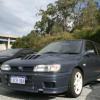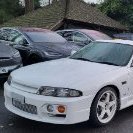33 Hi Flowed Vs Kkr430
Announcements
-
Similar Content
-
Latest Posts
-
Order for the 2025 model R35 GT-R were accepted from 3rd March and 26th August the last order rolled off the production line at the Tochigi plant. Concerning the R35 GT-R replacement, current Nissan CEO Ivan Espinosa said "Nothing has been decided about the GT-R at this time, but we are well aware that everyone is waiting. The GT-R will evolve and reappear in the future. Please be patient until that day comes." Nissan has a lot of issues with management and finances so take Espinosa's words with a big grain of salt. From what discussions I've had and read about here in Japan, not a lot of people are confident about Nissan's future, let alone the next GT-R.
-
Thanks. We getting some parts along too so he will be solving the speed issue like next week so i will let you know what he came up with.
-
21 is explicitly the coils detected as the issue. Is it guaranteed the actual issue? No. Just the ECU thinks it is. When you say rattling, describe it better, get an audio clip as best you can if possible.
-
Yea got me coppers. Bad news is I just put them in and the car still has the light and shakes. I also noticed I hear like rattling coming from the exhaust piping right under me. Does 21 also have a possibility of being O2 sensors? So, coil packs are good, the harness is good, the MAF is working, and obviously the spark plugs just replaced and working.
-
Make sure you drop the GTT base tune back in, and set your injectors again, this will remove anything playing up with it you may have removed. Possibly lean there as it's normally a fast transient going THROUGH atmospheric pressure, and a turbo motor would then quickly go richer as boost builds. The only worry you MIGHT have is ignition timing, as the DE is higher compression than the DET from memory. But again, you're not in boost, so the DE motor will be a lot more forgiving at atmospheric. Get Murray, Kinkstahs, and Johnny's input on tuning haltechs, those guys have played with tuning enough in the past to be able to help now you're past the trouble shooting stage of the MAP issue
-








Recommended Posts
Create an account or sign in to comment
You need to be a member in order to leave a comment
Create an account
Sign up for a new account in our community. It's easy!
Register a new accountSign in
Already have an account? Sign in here.
Sign In Now